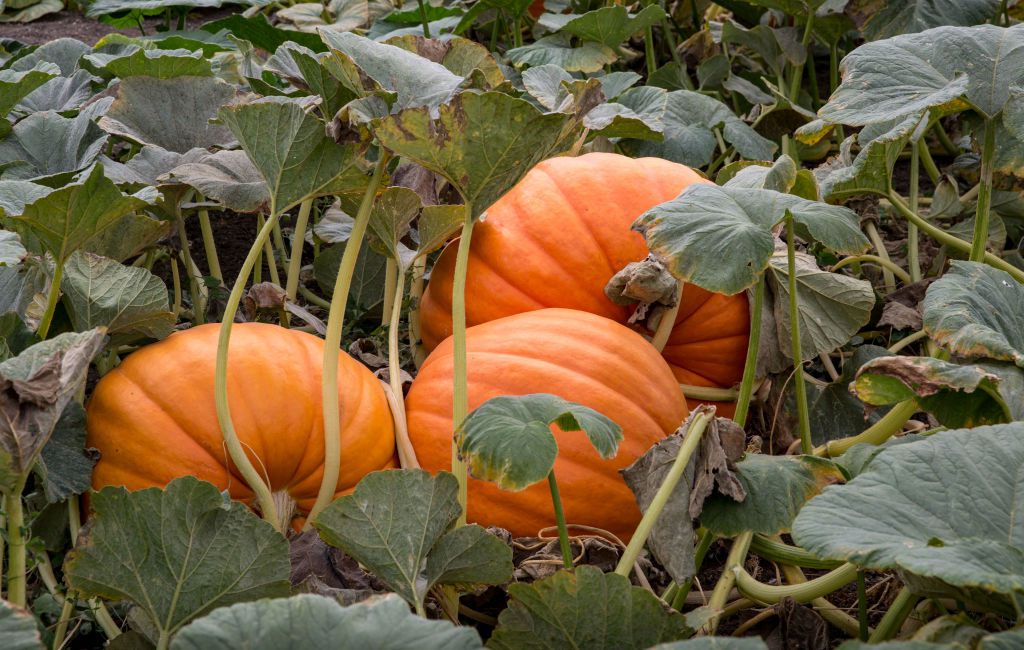
Pumpkin vines are not only the lifeline of the beloved fall fruit, but they also hold a remarkable botanical beauty. Understanding their appearance and characteristics is essential for anyone interested in cultivating or appreciating these iconic plants. In this comprehensive guide, we’ll explore the intricate details of what a pumpkin vine looks like, from its anatomy to its varieties, growth, care, and harvesting.
I. Introduction
Pumpkin vines, scientifically known as Cucurbita pepo, are vigorous, sprawling plants belonging to the gourd family, Cucurbitaceae. Their sprawling vines and broad, lobed leaves are iconic symbols of autumn harvests and Halloween decorations. This article aims to provide insight into the appearance and attributes of pumpkin vines, offering valuable information for gardeners, enthusiasts, and curious minds alike.
II. Anatomy of a Pumpkin Vine
Main stem and branches
The main stem of a pumpkin vine serves as its central axis, from which lateral branches emerge. These branches, known as runners, extend horizontally along the ground or climb on nearby structures, facilitating the plant’s expansion and fruit production. With time, the main stem thickens and develops a rough, fibrous texture, providing support and stability to the growing vine.
Leaves and tendrils
Pumpkin leaves are large, broad, and deeply lobed, resembling the shape of a human hand with several fingers. These leaves play a crucial role in photosynthesis, harnessing sunlight to produce energy for the plant’s growth and development. Additionally, pumpkin vines feature tendrils—slender, coiling structures that emerge from leaf axils. Tendrils help anchor the vine to its surroundings, providing structural support and stability as it sprawls and climbs.
Flowering and fruiting structures
Pumpkin vines produce separate male and female flowers on the same plant, a characteristic feature of the Cucurbitaceae family. Male flowers, borne on long, slender stems called peduncles, outnumber female flowers and typically appear first in the growing season. Female flowers, distinguished by their swollen ovary at the base, develop into fruits (pumpkins) upon successful pollination. The fruits emerge from the nodes along the vine, gradually maturing into the iconic orange orbs synonymous with autumn harvests.
III. Varieties of Pumpkin Vines
Common pumpkin vine varieties
Traditional pumpkin vines encompass a diverse array of cultivars, ranging from classic jack-o’-lantern varieties to smaller pie pumpkins and decorative gourds. Heirloom varieties, bred for their historical significance and unique characteristics, offer a glimpse into the rich heritage of pumpkin cultivation. In contrast, hybrid varieties combine desirable traits such as disease resistance, uniformity, and flavor, catering to the diverse preferences of modern gardeners and consumers.
Ornamental pumpkin vines
Beyond their culinary utility, certain pumpkin vine species are prized for their ornamental value, featuring vibrant colors, unique shapes, and intriguing textures. Ornamental pumpkins, including miniature varieties and novelty gourds, serve as decorative accents in seasonal displays, floral arrangements, and holiday decorations. Their diverse hues, ranging from deep orange and creamy white to mottled green and striped patterns, add visual interest and festive charm to indoor and outdoor settings.
Specialty pumpkin vines
In addition to traditional and ornamental varieties, specialty pumpkin vines encompass a wide range of cultivars tailored to specific culinary and decorative purposes. From sugar pumpkins prized for their sweet flesh and creamy texture to heirloom varieties renowned for their rich flavor profiles and historical significance, specialty pumpkins offer endless possibilities for creative cooking and artistic expression. Whether used in savory dishes, desserts, or decorative centerpieces, these unique pumpkins add a touch of sophistication and flair to any culinary or aesthetic endeavor.
IV. Growth and Care of Pumpkin Vines
Optimal growing conditions
Pumpkin vines thrive in warm, sunny locations with well-drained soil and ample space for sprawling growth. Full sunlight is essential for maximizing photosynthesis and promoting robust vine development, while soil with a pH range of 6.0 to 6.8 provides optimal nutrient uptake and root health.
Watering and fertilization
Consistent watering is crucial for sustaining healthy pumpkin vines, especially during periods of active growth and fruit development. Deep, infrequent watering encourages deep root penetration and reduces the risk of soil-borne diseases. Additionally, incorporating organic matter such as compost or aged manure into the soil improves soil structure, fertility, and moisture retention, minimizing the need for synthetic fertilizers.
Pest and disease management
Pumpkin vines are susceptible to various pests and diseases, including cucumber beetles, squash bugs, powdery mildew, and downy mildew. Implementing preventive measures such as crop rotation, intercropping with companion plants, and maintaining good garden hygiene helps minimize pest pressure and disease incidence. Additionally, organic remedies such as neem oil, insecticidal soap, and botanical extracts offer effective control options for managing pests and diseases without harmful chemicals.
V. Harvesting and Harvesting Pumpkin Vines
Signs of readiness for harvest
Determining the optimal time for harvesting pumpkins involves observing visual, tactile, and auditory cues that indicate ripeness. Ripe pumpkins typically exhibit vibrant coloration, firm skin, and a hollow sound when tapped. Additionally, mature pumpkins develop a hardened stem and tendril near the fruit’s base, signaling readiness for harvest.
Techniques for harvesting pumpkins
When harvesting pumpkins, it’s essential to use sharp pruning shears or a serrated knife to cut the fruit from the vine, leaving a few inches of stem attached. This stub of stem helps prolong the pumpkin’s shelf life and reduces the risk of rot. Carefully handle harvested pumpkins to avoid bruising or damaging the skin, and store them in a cool, dry location with good air circulation to prolong their freshness and flavor.
In conclusion, understanding the appearance and attributes of pumpkin vines is key to successful cultivation and appreciation of these versatile plants. By familiarizing oneself with the anatomy, varieties, growth, care, and harvesting techniques of pumpkin vines, gardeners and enthusiasts can enjoy a bountiful harvest of nutritious fruits and ornamental gourds while adding beauty and charm to their outdoor spaces. Whether grown for culinary delights, festive decorations, or aesthetic pleasure, pumpkin vines hold a special place in the hearts and gardens of autumn enthusiasts worldwide.
